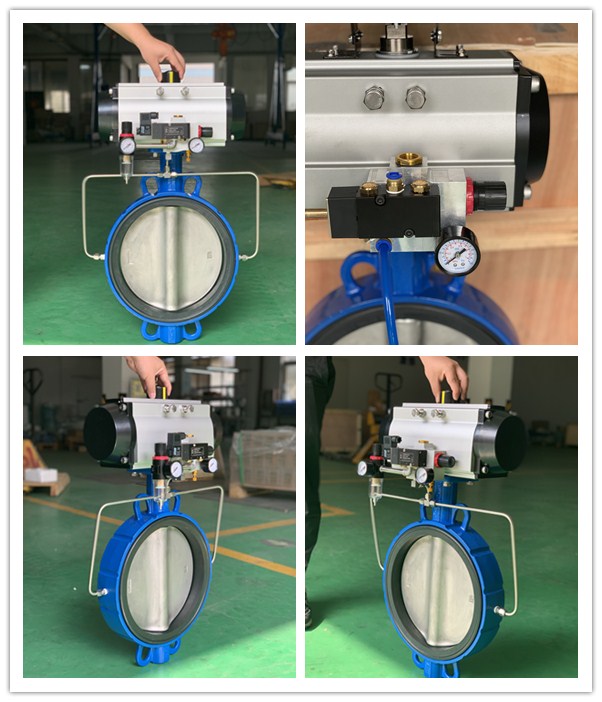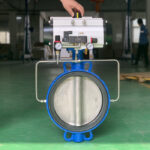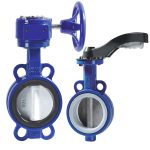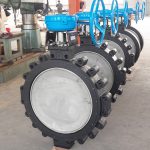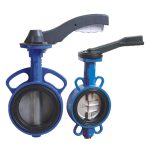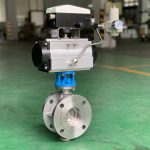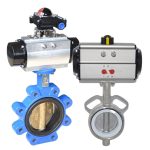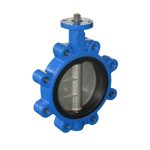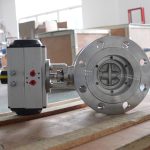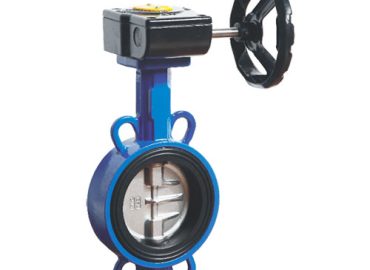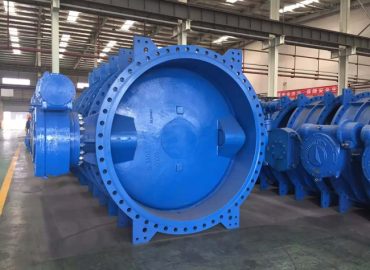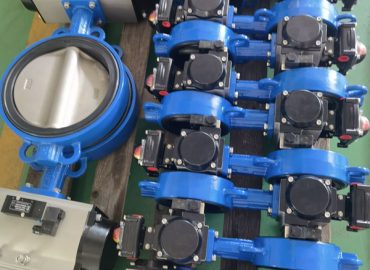In the world of fluid control systems, butterfly valves have always held a significant place due to their efficiency and versatility. Among the various types of butterfly valves, one standout variant is the inflatable seat butterfly valve. These specialized valves, characterized by their unique design features, offer a different approach to controlling and regulating fluid flow. This blog post aims to delve into the fascinating world of inflatable seat butterfly valves, exploring their innovative design features and the unique applications they serve in various industries. Whether you’re a seasoned engineer or a curious novice, join us as we unravel the intricacies of these remarkable devices.
Introduction
Inflatable seat butterfly valves are an innovative and efficient solution in the industrial sector, offering a unique blend of functionality and adaptability. These valves are designed with a specialized inflatable seat that provides a tight shut-off even in the presence of solids. This design feature allows them to handle a wide range of materials, including dry bulk solids, granules, powders, and slurries. The inflatable seat offers a 100% bubble-tight seal, thereby eliminating the risk of leakage and ensuring the smooth operation of various industrial processes. The valve’s body is typically made of durable materials like stainless steel or carbon steel, which can withstand high pressures and temperatures. Moreover, these valves come with manual, pneumatic, or electric actuation options, providing flexibility based on the specific application requirements. They are widely used in industries such as food processing, chemical, pharmaceutical, and mining due to their ability to prevent product contamination and facilitate easy cleaning. Inflatable seat butterfly valves also offer a long service life with minimal maintenance, making them a cost-effective choice for many industrial applications. Their unique design and multiple features make them a versatile solution, capable of meeting diverse industrial demands.
Brief overview of butterfly valves and their importance in fluid control systems.
Butterfly valves play a critical role in the realm of fluid control systems. These quarter-turn rotational motion devices employ a rotary disc to regulate, allow, or obstruct the flow of fluids within a pipeline system, making them an essential component for efficient fluid management. Their simple yet effective design, coupled with their relatively low cost, makes them a preferred choice for many industries. The space-saving and lightweight nature of butterfly valves further adds to their appeal when compared to other valve options such as ball and check valves. Specifically designed for quick shut-off in piping systems, these valves get their name from the shape of their body and closure elements, which resemble a butterfly’s wings. Another significant advantage of butterfly valves is their ability to regulate flow with ease, thanks to their unique feature of a circular plate that efficiently controls and reduces flow.
Introduction to inflatable seat butterfly valves and their unique features.
Inflatable seat butterfly valves, as their name suggests, come with a unique inflatable seat feature that sets them apart from other types of butterfly valves. This innovative design employs air pressure to expand the valve’s seat against the disc, resulting in an even distribution of pressure and a bubble-tight seal, thereby minimizing potential leaks. These valves are recognized for their ability to serve as effective isolation valves, particularly in power generation contexts where strict isolation is required. The inflatable seat butterfly valve’s design includes a disc-like closure member that is rotated 90 degrees or less to open or close the valve, much like other butterfly valves. Additionally, the valve comprises several components including a body, seat, disc, stem, and actuator, each available in various materials known as “trim features”. The unique design of the inflatable seat butterfly valve not only ensures superior control of fluid flow but also offers cost-effectiveness, making it a preferred choice for many industries.
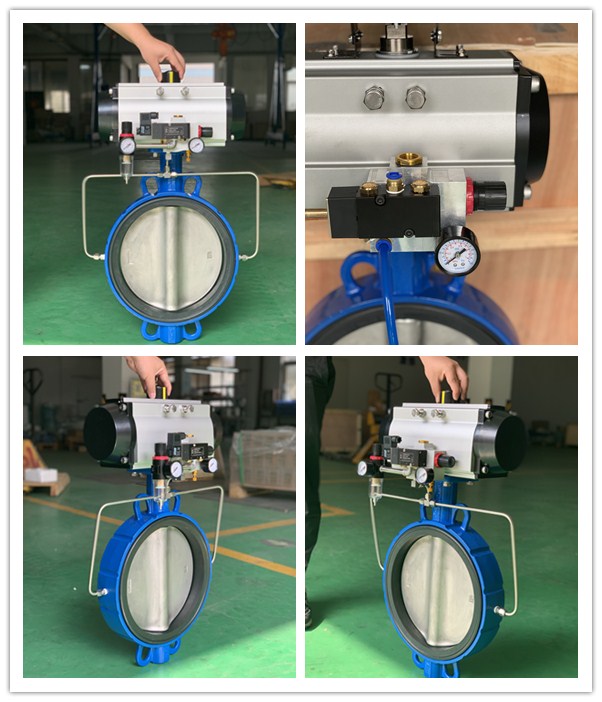
Understanding Inflatable Seat Butterfly Valves
Inflatable seat butterfly valves, a specialized subset within the broader category of butterfly valves, are designed to handle a diverse range of materials and deliver exceptional performance even under challenging conditions. At their core, these valves incorporate an inflatable seat that forms a tight seal when inflated, preventing any leakage of the material being controlled. When deflated, the valve allows for free flow of the material. This functionality is particularly useful when dealing with granular or powdered materials that could otherwise become lodged in the valve, causing blockages. The design of these valves typically includes a disc mounted on a rotating shaft. When the disc is turned, it either opens or closes the valve, controlling the flow of material. The inflatable seat enhances this basic function by providing a tighter seal and better control over the flow. Due to their unique design and superior sealing capabilities, inflatable seat butterfly valves find application in a variety of industries including food processing, pharmaceuticals, and mining where they help maintain hygiene standards, prevent contamination, and facilitate easy cleaning and maintenance. Their durability and reliability make them an excellent choice for demanding industrial applications.
Definition and basic concept of inflatable seat butterfly valves.
Inflatable seat butterfly valves are a unique variant of butterfly valves, which are widely recognized for their effective control of fluid flow. The basic concept of an inflatable seat butterfly valve revolves around its main components: the body, disc, stem, and the distinctive inflatable seat. Unlike traditional butterfly valves that rely on friction for sealing, inflatable seat butterfly valves employ an inflatable seal or bladder. This special feature is inflated or deflated with air pressure to establish a tight seal against the disc. When the seal is inflated, it provides a bubble-tight shut-off, preventing any leakage. On the other hand, when the seal is deflated, the valve allows free flow of materials. The butterfly disc, mounted on a shaft inside the valve body, rotates around its own axis to regulate the flow of fluids. This innovative design makes inflatable seat butterfly valves an efficient and reliable solution in various industrial applications, offering a superior sealing mechanism and improved operational efficiency.
How inflatable seat butterfly valves work: A simple explanation.
Inflatable seat butterfly valves operate on a unique principle that sets them apart from other types of butterfly valves. The heart of this valve is its inflatable seat, which is designed to inflate and deflate to control the flow of material. In its normal state, the seat is deflated, allowing materials to flow freely across the valve. When it’s required to halt the flow, the seat is inflated using pressurized air or some other fluid. As the seat inflates, it expands to tightly seal against the disc, thus completely stopping the flow of material. This inflation creates a 100% bubble-tight seal, preventing any leakage or cross-contamination. Once the need for shut-off is over, the seat is deflated, returning the valve to its open state and allowing the free flow of material once again. This simple yet effective mechanism makes inflatable seat butterfly valves extremely versatile, capable of handling a variety of materials, including granules, powders, and slurries, making them an ideal choice for industries ranging from food processing to mining.
Key components that make up an inflatable seat butterfly valve.
An inflatable seat butterfly valve is made up of several key components, each playing a crucial role in its operation. At the heart of the valve is the inflatable seat, a unique feature that inflates to create a tight seal against the disc when the valve is in the closed position. This ensures zero leakage and prevents contamination of the product. The disc, typically made of durable materials like stainless steel or carbon steel, is another essential component. It rotates to either open or close the valve, thereby controlling the flow of fluid. The stem is connected to the disc and extends outside the valve, allowing external control of the disc’s position. The body of the valve, often designed to be robust and corrosion-resistant, houses these internal components and connects the valve to the pipeline. Finally, the actuator, which can be manual, pneumatic, or electric, controls the movement of the stem and disc, ultimately dictating whether the valve is open or closed. Each of these components contributes to the overall functionality and efficiency of an inflatable seat butterfly valve.
Design Features of Inflatable Seat Butterfly Valves
Inflatable seat butterfly valves showcase an innovative design that combines the traditional aspects of a butterfly valve with the unique feature of an inflatable seat. The fundamental structure includes a disc, typically mounted on a rotating shaft, which when turned, either opens or closes the valve to regulate fluid flow. However, what sets these valves apart is the inflatable seat. This seat expands and contracts using air pressure, providing a tighter seal when inflated and allowing for free flow when deflated. This dual function eliminates the potential for trapped materials in the valve, a common issue faced with granular or powdered substances.
The inflatable seat is constructed from durable materials resistant to a wide range of chemicals and temperatures, ensuring longevity and reliability even in demanding industrial environments. These materials also provide superior sealing capabilities, preventing any leakage of the material being controlled. This feature is especially beneficial in industries where maintaining hygiene standards and preventing contamination are paramount.
Another key design attribute is the ease of maintenance. The simple design of the inflatable seat butterfly valve facilitates easy cleaning and replacement of parts, reducing downtime and increasing operational efficiency. Furthermore, the body of the valve can be made of different materials, including stainless steel, carbon steel, or other alloys, depending on the specific requirements of the application.
The actuator, another critical component, can be manual or automated, providing flexibility in operation. Automated actuators may be pneumatic, electric, or hydraulic, allowing for remote control and precise regulation of fluid flow. Lastly, the trim features, which include the disc, stem, and seat, can be customized in various materials to suit specific application needs.
Overall, the design features of inflatable seat butterfly valves offer a unique blend of functionality, durability, and adaptability, making them an ideal choice across numerous sectors.
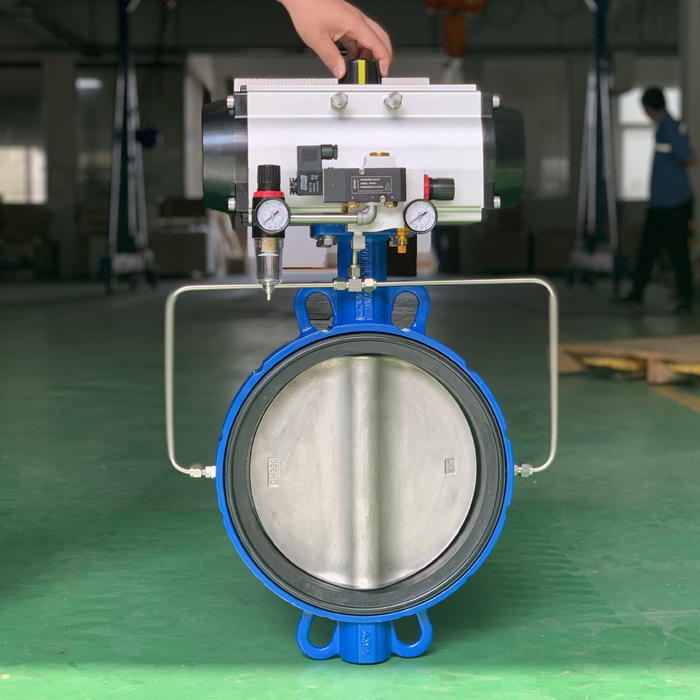
Detailed discussion on the design features of inflatable seat butterfly valves.
Inflatable seat butterfly valves are distinguished by several unique design features. The core of the valve is a butterfly disc, mounted on a shaft within the valve body. This disc can rotate to either permit or restrict the flow of materials (ScienceDirect). The standout feature of these valves, however, is their inflatable seal or bladder. This seal inflates or deflates in response to air pressure, forming an even pressure distribution against the disc and providing a tight seal when inflated (Posi-flate, Hawsd). This design offers superior sealing capabilities compared to standard butterfly valves, preventing leakage and cross-contamination. Additionally, the use of industrial-grade components ensures long life and durability (Value Butterfly Valves). The seat’s design is particularly adept at handling severe conditions, expanding under air pressure to provide more sealing area and an even pressure distribution, making these valves ideal for heavy-duty applications (GlobalSpec, McRae Engineering, Bulk Solids Today). Finally, the installation of these valves as isolation valves in power generation further showcases their versatility (Airmatic).
How these design features contribute to the valve’s functionality and efficiency.
The design features of an inflatable seat butterfly valve greatly contribute to its functionality and efficiency. The central component, the inflatable seat, enables an airtight seal when inflated, ensuring zero leakage and preventing cross-contamination of materials. This is particularly beneficial in industries where hygiene and purity are paramount, such as food processing or pharmaceuticals. The disc’s ability to rotate provides precise control over the flow of fluid, making these valves highly adaptable to varying flow requirements. The robust body of the valve ensures durability and long-term operation even in harsh conditions, contributing to the overall efficiency of the system it’s integrated into. The stem, extending outside the valve, allows for easy manipulation of the disc’s position, enhancing usability. Finally, the actuator, whether manual, pneumatic, or electric, offers flexibility in controlling the valve, accommodating different operational needs and environments. Together, these design features make the inflatable seat butterfly valve a reliable, versatile, and efficient solution for flow control in various industrial applications.
Focus on aspects like seal inflation, positive shutoff, and minimized torque.
Inflatable seat butterfly valves are distinguished by their unique features such as seal inflation, positive shutoff, and minimized torque. The seal inflation is one of the most innovative aspects of these valves. When it is necessary to stop the flow of material, the seat inflates using pressurized air or fluid, expanding to create a tight seal against the disc. This inflated seal ensures a positive shutoff, which means that there is a total cessation of flow with zero leakage. It’s an incredibly effective method for preventing cross-contamination and maintaining high standards of hygiene in sensitive industrial processes. Furthermore, these valves are designed to operate with minimized torque. The inflatable seat reduces friction between the seat and the disc, enabling easy rotation of the disc with less force. This efficient design not only simplifies the operation of the valve but also extends its lifespan by reducing wear and tear on the components. Thus, the combination of seal inflation, positive shutoff, and minimized torque makes inflatable seat butterfly valves highly efficient and reliable in controlling the flow of materials.
Unique Applications of Inflatable Seat Butterfly Valves
Inflatable seat butterfly valves have a range of unique applications across various industries due to their distinctive design and functionality. In the pharmaceutical and food processing sectors, these valves are highly prized for their ability to prevent cross-contamination. The tight seal provided by the inflatable seat ensures zero leakage, maintaining high hygiene standards and product integrity. They are also used in chemical plants where handling aggressive, corrosive substances is routine. The robust materials used for the disc and the inflatable seat can withstand such harsh environments, delivering reliable performance while ensuring safety.
In the mining and cement industries, these valves are employed to control the flow of abrasive materials. Their unique design prevents material buildup and wear, thereby reducing maintenance needs and increasing operational efficiency. This makes them ideal for controlling the flow of granular or powdered substances. The oil and gas industry also benefits from these valves, particularly in pipeline applications where leak-proof sealing is critical. The inflatable seat provides an excellent shut-off capability even at low differential pressures, making them suitable for low-pressure gas transmission lines.
Moreover, in water treatment plants, these valves effectively regulate the flow of water and other fluids, withstanding the corrosive effects of certain chemicals used in the process. The ability to withstand different temperature ranges also makes them useful in HVAC systems for controlling air flow. Another unique application is in pneumatic conveying systems where these valves are used to isolate different sections of the system during maintenance or in case of a blockage.
Overall, the unique features and robust design of inflatable seat butterfly valves make them versatile across numerous sectors, adapting to a wide range of operating conditions and handling various types of media — from gases and liquids to granular solids.

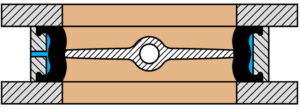
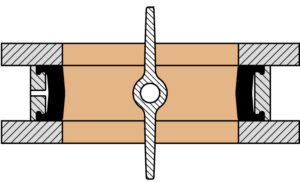
Introduction to the various fields where inflatable seat butterfly valves are used.
Inflatable seat butterfly valves are utilized in an array of industries due to their unique design and superior sealing capabilities. They are particularly beneficial in the food and beverage industry, where they prevent contamination and ensure hygiene standards are maintained. The pharmaceutical industry also uses these valves for similar reasons, ensuring the purity of medicines and other products. In the chemical industry, they are used for handling corrosive and hazardous materials, owing to their robust construction that resists a wide range of chemicals. These valves also find applications in the power generation sector, where they provide effective isolation, preventing leakage and enhancing safety. The mining industry utilizes them for handling abrasive and granular materials, as the inflatable seat prevents material build-up and valve wear. Additionally, they’re used in wastewater treatment plants for regulating fluid flow. Overall, the versatility of inflatable seat butterfly valves makes them a valuable asset in numerous fields.
Case studies of unique applications, explaining how the design features of these valves are capitalized in different industries.
The unique design features of valves find diverse applications across multiple industries, as evidenced by several case studies. For instance, in the power plant sector, metal-seated ball valves are used in supercritical steam conditions, withstanding rapid high-pressure and temperature variations due to their robust design (Springer). Another study highlights the use of flow-mode MR valves in the automotive industry and optical finishing applications. These valves leverage the rheology of smart fluids, demonstrating the innovative application of material science (MDPI). Geothermal power plants also utilize valves in a unique way, capitalizing on the basic science that governs the processes (Google Books). Furthermore, valves are employed in stormwater systems for flood risk mitigation, showcasing their role in environmental management (ASCE Library). In the medical field, valves are used for treatment in cases like Gaucher’s disease, indicating their importance in healthcare applications (ScienceDirect). These case studies illustrate how the design features of valves, such as durability, adaptability, and precise control, are capitalized across different industries, reinforcing their versatility and efficacy.
Specific examples may include the food and beverage industry, pharmaceuticals, chemical processing plants, etc.
Inflatable seat butterfly valves are integral to several industries, including food and beverage, pharmaceuticals, and chemical processing plants. In the food and beverage industry, for instance, these valves are used in processes that involve liquid foods like milk, beer, and juices, as well as semi-solid foods such as purees and sauces. They ensure a tight seal when closed, preventing leakage and cross-contamination between different food products, which is crucial for maintaining hygiene standards and product quality.
In the pharmaceutical sector, these valves play a critical role in processes involving the flow of sensitive materials. The inflatable seat provides an exceptional level of sealing, ensuring that there is no contamination, which is paramount in an industry where purity is essential. This is particularly important during the manufacturing of medicines, where even minor contaminations can have serious implications.
Chemical processing plants also rely heavily on these valves. Given the nature of the substances they handle—many of which are corrosive or toxic—the inflatable seat butterfly valves’ ability to provide a secure shut-off is invaluable. It not only prevents leakage of hazardous substances but also ensures the safety of the plant and its workers. Furthermore, their robust design allows them to withstand the harsh conditions typical of chemical plants, adding to their longevity and reliability.

Benefits of Using Inflatable Seat Butterfly Valves
Inflatable seat butterfly valves offer numerous benefits, making them a popular choice in various industries. One of the key advantages is their excellent sealing capabilities. The inflatable seat forms a tight seal against the disc, ensuring zero leakage and preventing cross-contamination. This is particularly beneficial in industries such as food processing and pharmaceuticals, where maintaining product purity is imperative.
Another major benefit is their ability to handle a wide range of materials, from liquids and gases to granular and powdered substances. This versatility makes these valves suitable for a variety of applications, including chemical processing, mining operations, and pneumatic conveying systems. The inflatable seat design also minimizes friction, which reduces wear and tear on the components, thereby extending the lifespan of the valve.
Furthermore, these valves offer a positive shutoff, meaning they can completely stop the flow of material when necessary. This is critical in situations where precise flow control is required. In addition, because of their minimized torque, these valves are easier to operate compared to other types of valves, reducing the effort needed to open and close the valve and enhancing operational efficiency.
The robust construction of these valves allows them to withstand harsh conditions, including aggressive chemicals and high temperatures, making them suitable for use in demanding environments. Finally, due to their efficient design, inflatable seat butterfly valves require less maintenance, which can lead to significant cost savings over time. All these benefits contribute to making inflatable seat butterfly valves a reliable and cost-effective solution for flow control in a wide range of applications.
Discussion on the advantages of using inflatable seat butterfly valves over traditional ones.
Inflatable seat butterfly valves offer several advantages over traditional ones, making them a preferred choice in many industries. One of the primary benefits is their superior sealing capability. The inflatable seat ensures a tight seal, eliminating leakage, which is often a challenge with conventional valves. This feature not only enhances operational efficiency but also ensures safety, especially when dealing with hazardous substances. In addition to this, these valves are designed to withstand harsh environments, making them suitable for industries that handle corrosive or abrasive materials. Their resistance to wear and tear reduces maintenance needs, providing long-term cost savings. Furthermore, inflatable seat butterfly valves offer better flow control, allowing for precise regulation of the flow rate, which is crucial in many processes. Another key advantage is their adaptability to low differential pressures, making them suitable for a wider range of applications. These features make inflatable seat butterfly valves a more efficient and reliable solution compared to traditional valves.
How the unique design features add value to different applications.
The unique design features of valves significantly add value to various applications across industries. For instance, the robustness and durability of metal-seated ball valves are critical for high-pressure and high-temperature environments, such as power plants, ensuring uninterrupted operations and reducing maintenance costs. The adaptability of flow-mode MR valves, which use smart fluids for precision control, is pivotal in the automotive industry, enhancing vehicle performance and safety. In geothermal power plants, the ability of specific valves to handle the unique aspects of geothermal energy contributes to efficient energy production. The role of valves in flood risk mitigation in stormwater systems underscores their importance in environmental sustainability, offering a cost-effective solution to flood control. In the healthcare sector, valves used for treatments like Gaucher’s disease demonstrate their potential in improving patient outcomes and quality of life. Thus, the unique design features of valves not only enhance functionality and efficiency but also contribute to economic savings, safety, environmental protection, and health improvement.
Considerations When Choosing Inflatable Seat Butterfly Valves
When choosing inflatable seat butterfly valves, several considerations come into play to ensure that they meet the specific requirements of the application. First and foremost, the type of media that the valve will control is a crucial factor. This could range from liquids and gases to semi-solids and even dry materials, all of which could have different flow characteristics and may require different types of valves. For instance, if the media is abrasive or corrosive, the valve must be made of materials that can withstand these conditions.
Secondly, the operating environment is an important consideration. This includes factors like temperature and pressure, which can significantly affect the performance and lifespan of the valve. For example, if the valve is expected to operate in high-temperature environments, it should be designed to tolerate these conditions without compromising its functionality.
The third consideration is the required flow rate. Different applications may require different flow rates, and the chosen valve should be able to accommodate these needs. It’s also important to consider whether the valve will be used for throttling purposes or simply for on-off control.
Fourthly, ease of maintenance and installation should be considered. Valves that are easy to install and maintain can significantly reduce downtime and associated costs. In addition, the availability of spare parts and technical support is also essential.
Finally, cost is an inevitable consideration. While it’s important not to compromise on quality, the chosen valve should offer good value for money. This includes not only the initial purchase cost but also the lifecycle costs, such as maintenance and energy usage.
In conclusion, choosing the right inflatable seat butterfly valve requires a thorough understanding of the application requirements and operating conditions, coupled with a balanced consideration of quality, cost, and support services.
Factors to consider when choosing inflatable seat butterfly valves for specific applications.
When choosing inflatable seat butterfly valves for specific applications, several factors need to be considered. Firstly, the nature of the material being handled is crucial. The valve should be compatible with the substance’s physical and chemical properties, such as its viscosity, corrosiveness, or granular nature. Secondly, the operating conditions, including pressure and temperature, must be taken into account as these can affect the valve’s performance and longevity. Thirdly, the required level of sealing is important. If zero leakage is necessary, as in the pharmaceutical or food industries, an inflatable seat butterfly valve with excellent sealing capabilities would be a suitable choice. Fourthly, the ease of operation and maintenance should be considered. Valves that require minimal torque to operate and less frequent maintenance can enhance operational efficiency and reduce downtime. Lastly, cost-effectiveness is a vital factor. While the initial investment might be high for some high-quality valves, lower maintenance and operational costs can make them more economical in the long run. Therefore, understanding the specific requirements of an application and assessing these factors can guide the selection of the most appropriate inflatable seat butterfly valve.
Importance of quality and maintenance for optimal functionality.
The importance of quality and maintenance for optimal functionality cannot be overstated. High-quality equipment and machinery are designed to perform their intended functions efficiently and reliably, contributing significantly to the overall productivity and profitability of any operation. These assets, however, can only maintain their performance levels if they are appropriately cared for. Regular maintenance is crucial in ensuring that machinery continues to operate at its peak capability. It aids in early detection of potential issues, allowing for timely repairs and preventing costly breakdowns. Furthermore, maintenance activities such as cleaning, lubrication, and calibration help to prolong the lifespan of equipment, leading to cost savings in the long run. Thus, investing in quality equipment and adhering to a regular maintenance schedule is essential for maintaining optimal functionality, minimizing downtime, and maximizing return on investment.
Conclusion
In conclusion, inflatable butterfly valves offer an innovative solution that stands out in the world of flow control. Their unique design features, such as superior sealing capabilities, adaptability to various materials, minimal friction, positive shutoff, and robust construction, make them a versatile and efficient choice for a wide range of industries.
The exceptional sealing capability provided by the inflatable seat ensures zero leakage, which is crucial in industries where maintaining product purity is non-negotiable. The ability to handle diverse materials, from liquids and gases to granular substances, broadens the scope of applications for these valves, making them useful in chemical processing, mining operations, and pneumatic conveying systems, among others.
Moreover, the minimal friction design not only reduces wear and tear on the components but also extends the lifespan of the valve, leading to significant cost savings in the long run. The positive shutoff feature allows for precise flow control, adding another layer of efficiency to the operations. Moreover, the robust construction enables these valves to withstand harsh conditions, further enhancing their durability and reliability.
While traditional valves have their place, it’s clear that inflatable seat butterfly valves offer several advantages that can’t be overlooked. They require less maintenance, provide better flow control, and are more resistant to wear and tear. These benefits make them a cost-effective solution that adds value to different applications.
As we continue to explore and innovate in the field of flow control, inflatable seat butterfly valves represent a significant leap forward. Their unique design and versatile applications underscore the importance of continuous innovation in this industry. By incorporating these advanced valves into their operations, companies can enhance efficiency, save costs, and ultimately, drive their success.
Recap of the key points discussed in the article.
In this article, we have discussed the advantages of using inflatable seat butterfly valves over traditional ones, highlighting their superior sealing capability, durability, better flow control, and adaptability to low differential pressures. We also explored how the unique design features of these valves add value to various applications across industries, from power plants and automotive to healthcare and environmental sustainability. When choosing inflatable seat butterfly valves, several considerations must be made, including the type of media controlled, operating environment, required flow rate, ease of maintenance, and cost. By understanding these key points, one can make an informed decision when selecting the right valve for their specific needs, ensuring efficient operations and long-term cost savings.
The future of inflatable seat butterfly valves: Innovation and advancements to look forward to.
The future of inflatable seat pneumatic butterfly valves is poised to be exciting and dynamic, driven by continuous innovation and advancements. As digital transformation accelerates across industries, we can expect these valves to integrate more smart features for enhanced performance and efficiency. Predictive maintenance capabilities, powered by IoT and machine learning, could become a standard feature, enabling timely detection of wear and tear and preventing unexpected downtime. Advancements in materials science could lead to the development of more durable and resilient valves that can withstand harsher conditions and last longer. In addition, the rise of green manufacturing practices and sustainability concerns may drive the creation of more energy-efficient valves and those made from eco-friendly materials. Furthermore, as customization becomes increasingly important in manufacturing, we might see more options for custom-designed inflatable seat butterfly valves tailored to meet specific application requirements. These innovations and advancements are expected to make inflatable seat butterfly valves more reliable, efficient, and adaptable to diverse industrial needs in the future.


